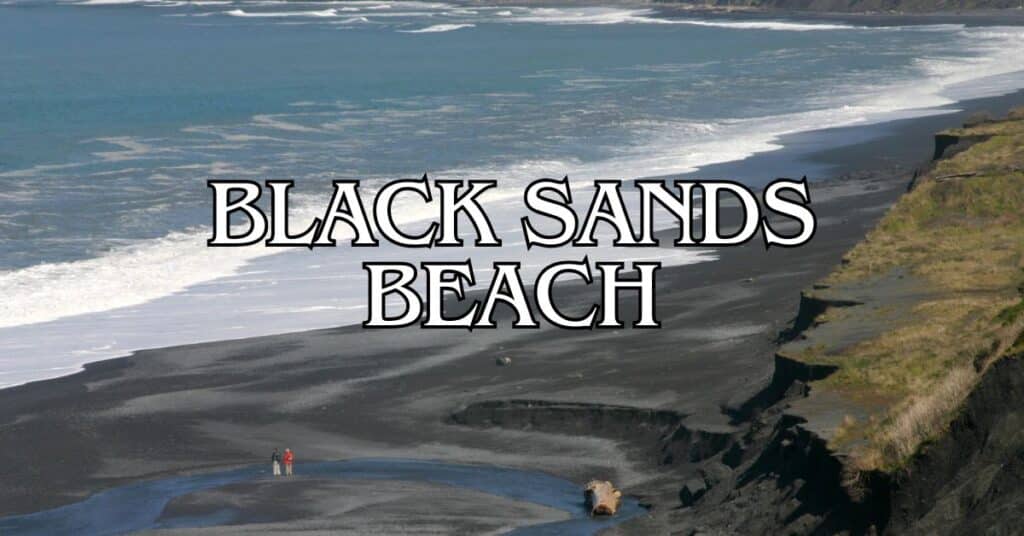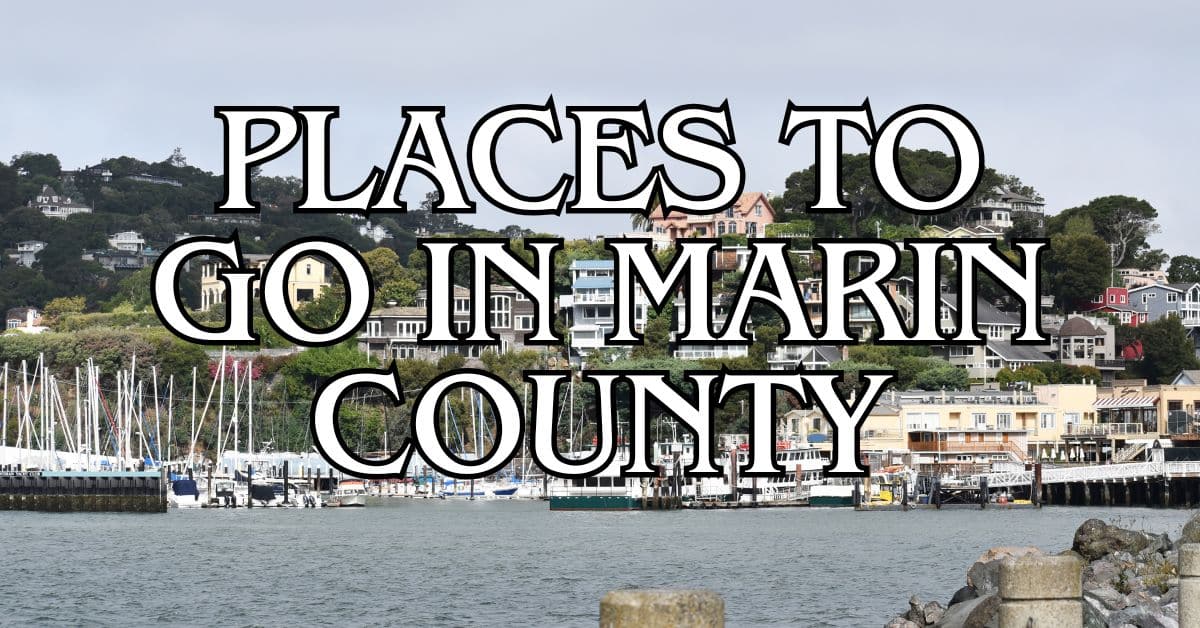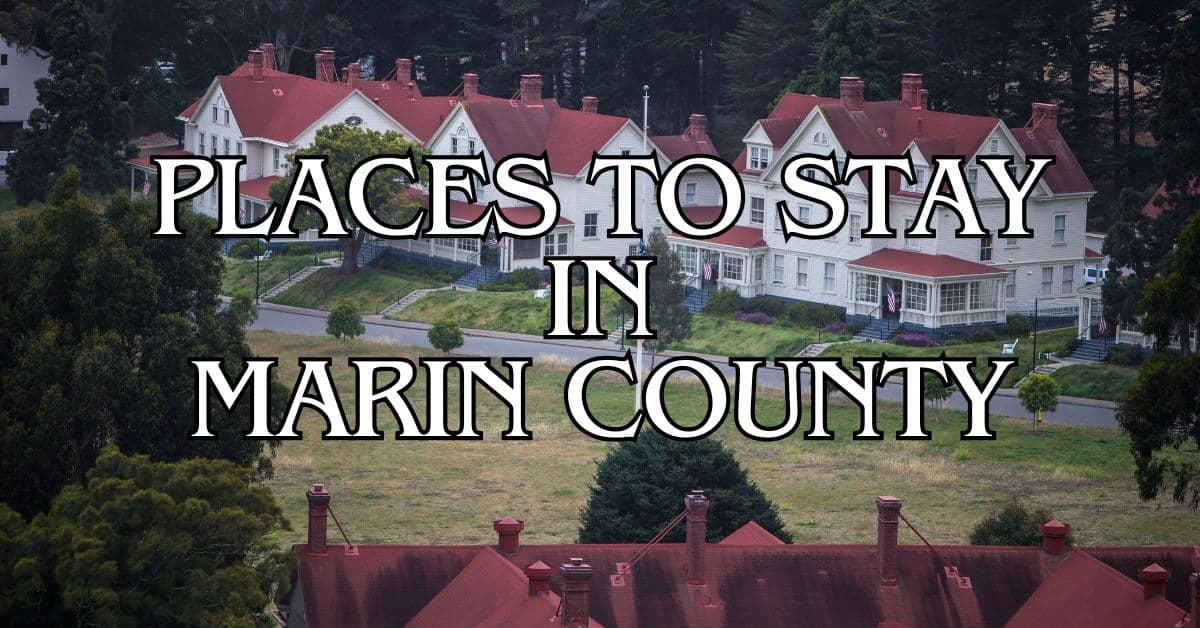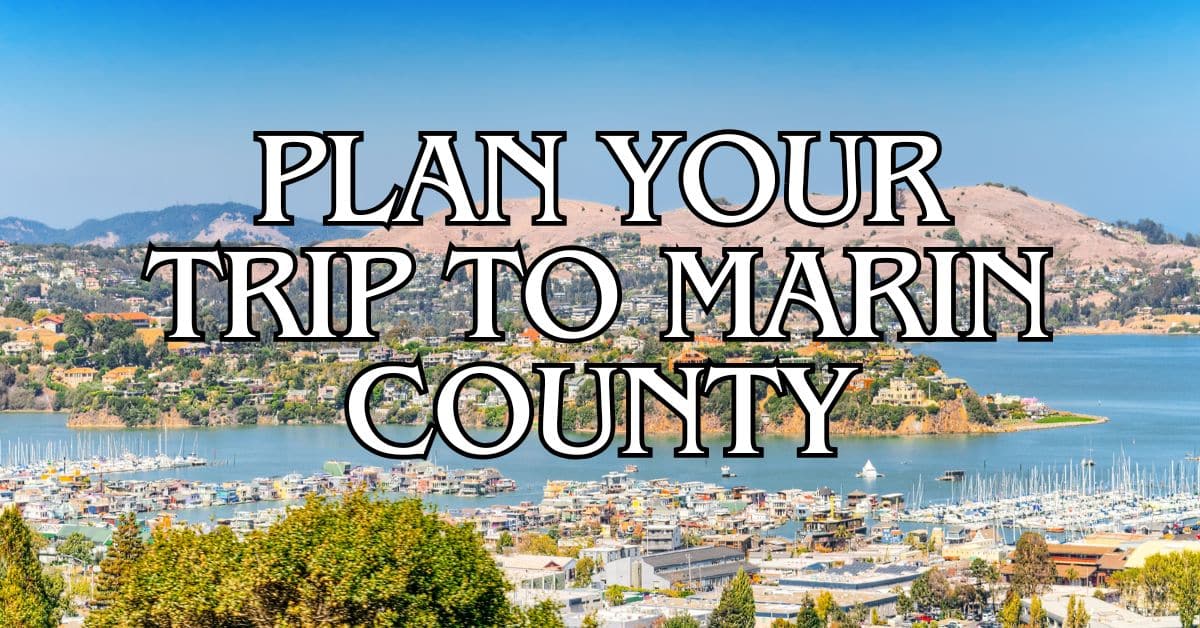Black Sands Beach sits tucked away in Marin County, about 45 minutes from San Francisco. The beach gets its name from the dark, graphite-colored sand—almost black against the blue Pacific. If you’re tired of the usual golden California beaches and want something a little more offbeat (and peaceful), this spot delivers.
To get there, you’ll have to hike down a steep trail. Honestly, that’s probably why it stays so quiet. The path is no joke, so pack light. But once you get to the bottom, it feels like you’ve stumbled onto your own private stretch of coast.
Discover hand-picked hotels and vacation homes tailored for every traveler. Skip booking fees and secure your dream stay today with real-time availability!
Browse Accommodations Now
The beach faces south, so it’s sheltered from most winds and opens up to views of Point Bonita and the wide Pacific. Tucked in the Marin Headlands, the scenery is dramatic but the vibe stays mellow. That contrast between the black sand and pounding surf? It’s a photographer’s dream, especially at sunset.
Overview of Black Sands Beach in Marin County
Black Sands Beach stands out for its dark sand and quiet, tucked-away feel. You get sweeping views of the Pacific and Point Bonita, but without the crowds that flock to other Bay Area beaches.
Location and Getting There
You’ll find Black Sands Beach in the Marin Headlands, only a few miles west of the Golden Gate Bridge. Even though it’s close to San Francisco, it takes some effort to get there. The trail from the parking area is steep and a little rough.
The trailhead sits near the Marin Headlands. The path down is pretty steep—good shoes are a must, and expect a moderately tough hike. Honestly, the tricky access is a blessing if you like your beaches peaceful.
Best to pack light. The less you carry, the better the trek feels. After rain, the trail gets even tougher, so check the weather before heading out.
Geological Features
The star here is the black sand, which looks nothing like the typical California coast. It comes from the erosion of the nearby cliffs and is packed with minerals that give it that unique color and gritty texture.
The sand’s coarser than what you’ll find at most local beaches, which makes the place stand out—especially when the low sun hits it. The beach sits in a sheltered cove, guarded by cliffs, so you get that rare sense of isolation. It’s mostly untouched, and that’s part of its charm.
History and Origins
Black Sands Beach is part of the Golden Gate National Recreation Area, set up in 1972 to protect the region’s wild spaces. The Marin Headlands itself has a long backstory, from Native American settlements to military posts.
The black sand comes from the steady erosion of the dark cliffs above. Over thousands of years, waves have broken those rocks down into what you see today.
The area around the beach was once packed with military fortifications, especially during WWII, though the beach itself wasn’t a military site. Now, it’s a natural haven where people can get a taste of the untamed California coast.
How to Access Black Sands Beach
Getting to Black Sands Beach takes some effort, but the payoff is a wild, uncrowded slice of coastline.
Parking Information
Parking is tight—there are maybe 10-15 spaces, and they fill up fast on weekends and holidays. The lot is off Conzelman Road, near Hawk Hill. Look for signs for Upper Fisherman’s Trail or Black Sands Beach.
Arrive early (before 10 AM) on weekends if you want a spot. Weekdays are a little less hectic.
Parking’s free, but don’t expect any facilities. The nearest restrooms are at the Marin Headlands Visitor Center.
If the lot’s full, you might find a spot along Conzelman Road, but don’t block traffic or park where it’s not allowed.
Stairs and Trail Details
You’ll need to tackle a steep hike down Upper Fisherman’s Trail. The trail starts at the parking lot and drops about 250 feet to the beach.
There are wooden and dirt stairs, and the terrain gets uneven in spots. It’ll take 15-20 minutes to get down, depending on your pace. The climb back up? Honestly, it’s a workout.
Wear sturdy shoes with good grip—the trail can get slippery if it’s wet or foggy. Some sections have handrails, but not all.
On clear days, you’ll catch awesome views of the Golden Gate Bridge and San Francisco skyline as you descend. Take your time and soak it in.
Beach Access Tips
Check the tide schedule before you go. Low tide means more beach to explore; high tide can swallow big chunks of sand.
The steep trail makes this spot tough for folks with mobility issues. If you need easier access, Rodeo Beach is a better bet.
Bring only what you need: water, snacks, sunscreen. There are no services on the trail or beach.
Heads up: some people sunbathe nude, especially in the northern section. If that’s not your thing, stick to the southern end.
Weekday mornings are the quietest. For real solitude, try a clear fall or winter weekday.
Natural Beauty and Attractions
Black Sands Beach is a stunner, with its inky sand and rugged coastline. The setting is perfect for wildlife watching and photography, no matter the season.
Scenic Views
The black sand pops against the blue ocean—it’s a wild contrast. You get sweeping views of Point Bonita and, on clear days, you might even spot the Golden Gate Bridge in the distance, framed by cliffs.
The beach faces south, so it feels sheltered and almost hidden away. The tall cliffs make it feel even more private.
Fog sometimes drifts in during the morning, giving the place an otherworldly vibe. Sunset is magic here, with golden light bouncing off the dark sand.
Find the perfect hotel or vacation rental. Instant booking, no fees!
View Top Stays
Wildlife and Birdwatching
You’ll spot plenty of marine life and birds year-round. Harbor seals love the offshore rocks, especially in the morning. Watch from a distance as they lounge or play.
The threatened snowy plover—a tiny, sand-colored shorebird—nests here. They blend in with the sand, so be careful where you step during nesting season (March to September).
During migration, shorebirds feed along the tideline. Binoculars help for spotting pelicans, cormorants, and sometimes ospreys cruising above the surf.
Low tide uncovers tidepools at the northern end, where you can find sea stars, anemones, and little crabs.
Photography Highlights
That black sand is a gift for photographers. The contrast with the white surf makes for striking images, especially when the weather turns dramatic.
Early mornings are best—soft light, fewer people. The rocky outcrops are perfect for framing shots.
Some folks find bits of sea glass or colorful stones, like jasper, mixed in the sand. They’re great for close-up photos.
The trail itself offers several overlooks worth shooting. Bring a wide lens for the sweeping views, and a zoom if you want to catch wildlife.
Outdoor Activities
Black Sands Beach is a solid spot for soaking up Marin’s wild coastline. You can hike, beachcomb, or fish—just keep an eye on changing conditions.
Hiking Trails Near Black Sands Beach
The Coastal Trail is your main route down—a steep, tough path that demands decent shoes and some stamina. It’s about 0.75 miles to the sand.
Want a longer hike? The 9-mile Rodeo Valley Trail loops through the Marin Headlands and connects to other trails, so you can make your walk as long (or short) as you want.
The Bobcat Trail is a moderate 2-mile route with killer views of the Golden Gate Bridge and city skyline. If you’re after something easier, the Tennessee Valley Trail offers a gentle 3.4-mile roundtrip to Tennessee Beach.
Popular Hiking Options:
- Coastal Trail (0.75 miles, steep)
- Rodeo Valley Trail (9 miles, challenging)
- Bobcat Trail (2 miles, moderate)
- Tennessee Valley Trail (3.4 miles, easy)
Swimming and Beach Safety
Swimming here? You’ll want to be really careful. No lifeguards, and the place is notorious for dangerous currents and sneaker waves that can catch you off guard.
The water’s cold year-round—usually 50-58°F—so hypothermia’s a real risk, even in summer. There’s a steep drop-off, making the waves unpredictable.
If you do wade in, never turn your back to the ocean. Sneaker waves hit fast and hard.
For safer swimming, head to Stinson Beach up north. They’ve usually got lifeguards in summer. Always check the latest conditions and heed posted warnings.
Fishing Opportunities
Local anglers come here for surf perch, striped bass, and sometimes halibut. You’ll need a California fishing license (easy to grab online or at a sporting goods store).
Spring and fall are usually best for fishing. Try early mornings or evenings when the tide’s shifting.
Bring medium-weight gear and a sand spike for your rods. Sandworms, motor oil grubs, or anchovy strips work well for bait.
The rocky ends of the beach often produce better catches than the middle. Check current regulations before you go—rules and limits change with the seasons.
Nearby Destinations and Points of Interest
Black Sands Beach is close to some seriously cool Marin County sights. A short drive gets you to historic lighthouses and old military sites with sweeping views of the Bay.
Point Bonita Lighthouse
Point Bonita Lighthouse is one of the few left in the U.S. still using its original lens. Built in 1855 and moved in 1877, it still guides ships through the tricky Golden Gate waters.
You reach it by walking a half-mile trail, passing through a hand-carved tunnel and over a suspension bridge (that view’s worth the trip alone).
It’s open Sundays and Mondays from 12:30 to 3:30 PM. The National Park Service runs guided tours, but only 49 people can be on the bridge at once. Wear comfy shoes and bring a jacket—it gets windy out there.
Exploring Marin Headlands
The Marin Headlands covers 12,000 acres of wild, windswept landscape and old military sites. You’ll spot relics like Battery Spencer, which hands-down offers one of the best views of the Golden Gate Bridge—honestly, it’s hard to beat.
If you’re into hiking, you’ve got options. Trails here range from mellow strolls to steeper climbs. The Coastal Trail gives you those classic ocean panoramas, while the Rodeo Lagoon Trail loops you around a freshwater lagoon that’s always busy with birds and the occasional critter.
You can swing by the Marine Mammal Center to meet some rescued seals and sea lions. They actually rehabilitate hundreds of animals every year, and the place is open for tours daily from 10 AM to 4 PM.
The Headlands also has the Nike Missile Site SF-88, a Cold War relic that’s been restored. They open it up for tours on the first Saturday of each month—pretty fascinating if you’re into history.
Other Notable Beaches in the Area
Marin County has a bunch of beautiful beaches besides Black Sands Beach, each with its own vibe and reasons to visit.
Luxury stays to cozy cottages await, all with instant booking. Find the best deals!
Browse Marin Stays
Stinson Beach
Stinson Beach ranks as one of Marin’s most popular destinations, about 20 miles north of San Francisco. It’s a long stretch—almost 3 miles—of soft sand and open coastline.
Facilities are solid: restrooms, picnic tables, and even a snack bar. Lifeguards keep watch during the summer, so it’s a safer bet for swimming than some other spots around here.
The town itself is right there, with a handful of restaurants and quirky little shops. Just a heads up—the water stays chilly, usually in the 50s or low 60s, no matter what time of year.
Parking gets tricky on weekends and holidays. If you want a spot in the main lot, come early, or get ready for a bit of a hike from town.
Muir Beach
Muir Beach is a cozy cove tucked just 3 miles west of Muir Woods. It’s a small, crescent-shaped beach, framed by rocky headlands.
There’s a restored wetland here that attracts all kinds of birds—great for wildlife watching if you bring binoculars. Up above, a scenic overlook lets you take in the coastline and ocean.
The Pelican Inn, an English-style pub and hotel, sits just a short walk away. It’s a nice spot for lunch or to warm up after a breezy afternoon.
Swimming isn’t really advised—currents can get strong, and waves sometimes surprise you. No lifeguards, so stay cautious if you do wade in.
Mile Rock Beach
Mile Rock Beach is a bit of a secret, hidden near Lands End in San Francisco. You’ll have to hike down some stairs and winding trails to reach it.
Instead of sand, you’ll find smooth stones and pebbles. When the waves roll in, the rocks make this oddly soothing sound—kind of mesmerizing.
From here, you get unusual angles of the Golden Gate Bridge. You can also see the Cliff House and Seal Rocks if you look back toward the city.
Don’t miss the Lands End Labyrinth up on the cliffs—a stone spiral created by Eduardo Aguilera. It’s a peaceful, slightly mysterious spot for a pause.
Marshall’s Beach
Marshall’s Beach sits just north of Baker Beach and gives you one of the most jaw-dropping Golden Gate Bridge views anywhere around.
You’ll need to hike down from the Batteries to Bluffs Trail to get there, which tends to keep the crowds away—even when the weather’s perfect.
At low tide, cool rock formations emerge, making it a favorite with photographers and geology fans alike.
Heads up: the northern section is clothing-optional. There are no facilities, so bring water and whatever else you’ll need.
Tips for Planning Your Visit
A bit of planning goes a long way at Black Sands Beach. Its unique characteristics mean you’ll want to be prepared for the best (and safest) visit.
Best Times to Visit
Check the tide charts before heading out. High tide shrinks the beach dramatically—sometimes it’s barely there. Low tide gives you more room to roam and really see the black sand in all its glory.
Spring and fall usually bring pleasant weather. In summer, morning fog is common, but it often clears by afternoon.
Weekdays are quieter. If weekends are your only option, aim to arrive before 10 AM to snag parking and enjoy a bit of solitude.
Winter can be wild, with big waves—fun to watch, but sometimes risky. Skip stormy days; the waves get unpredictable.
What to Bring
Pack light, since you’ll need to hike down. Wear sturdy shoes for the trail, and maybe toss sandals in your bag for the beach itself.
Essentials:
- Water bottle (there’s no water down there)
- Sun protection (hat, sunscreen, sunglasses)
- Light jacket or layers (the weather flips fast)
- Small backpack
- Camera or phone for photos
Bring snacks or lunch—no food nearby. A small trash bag is smart, since you’ll need to carry out whatever you bring in.
Binoculars are a nice touch for wildlife viewing; seabirds and sometimes marine mammals show up.
Accessibility Considerations
The trail down to Black Sands Beach is steep and not wheelchair friendly. It drops about a quarter mile, and parts are uneven.
If you have mobility challenges, know that the hike back up can be tough—give yourself extra time, maybe 15-20 minutes or more.
Parking is limited, especially on weekends and holidays. Early arrivals have better luck, or try a weekday for less hassle.
Cell service is unreliable here. Download maps or take screenshots before you go.
No public restrooms at the beach, so plan ahead and use facilities in nearby towns first.
Responsible Travel and Conservation
Black Sands Beach thrives when visitors look out for it. The dark sand and coastal habitats are delicate—it’s on all of us to help keep them that way.
Beach Preservation and Wildlife Protection
Stick to marked trails as you approach the beach—this really helps prevent cliff erosion and keeps the landscape intact.
Keep an eye out for snowy plovers in spring and early summer. These tiny shorebirds nest right on the sand and spook easily. Dogs should stay leashed to protect them and other wildlife.
Harbor seals sometimes haul out on the shoreline. If you spot them, stay at least 100 feet away. Binoculars let you watch without stressing them out.
Point Reyes National Seashore, home to several black sand beaches in the region, has specific rules to protect its habitats. It’s worth checking the latest regulations before your visit.
Leave No Trace Principles
Pack out whatever you bring in—seriously, there’s no trash service out here. Toss a small bag in your backpack for your waste, just in case.
Try to minimize your impact by:
- Sticking to marked trails
- Leaving rocks, sand, and plants where they are
- Keeping music down (or just pop in headphones)
- Skipping the campfire—those are usually not allowed
Local conservation groups organize beach cleanups now and then. If you’re feeling generous, maybe join in and help keep this place wild.
Definitely check tide times before you head down, or you might get stuck. Bring plenty of water and some sunblock; don’t count on finding much in the way of facilities.
Every little bit you do keeps Black Sands Beach a little more magical—for the wildlife, and for whoever wanders here next.
Find available hotels and vacation homes instantly. No fees, best rates guaranteed!
Check Availability Now






